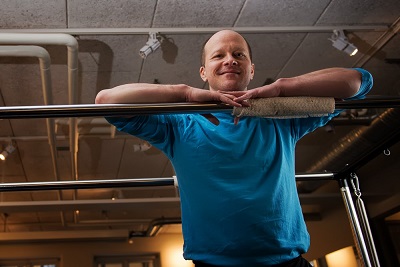One fine May morning I was lazily scrolling through my Facebook newsfeed when this comment grabbed my attention,
“When we do the exercise correctly and the body is in its correct position, its true alignment- there is not thought nor need to fire the correct muscles that need to work, the exercises done correctly will do so.”
I responded in the comments that I didn’t really find this to be true, stating that there was no ‘correct way’ which would result in the experience that was described. The author was kind and friendly enough to come back and explain more deeply what was meant and in the interest of brevity, the gist was as follows:
“If we do the exercises in the correct alignment, the correct muscles will fire. Every student’s alignment is individual. Put them in the correct position and the exercise does the work.”
This is a thought provoking statement, and is certainly not altogether untrue. Nonetheless, in my experience I do not find this particularly true, either. One of the desired outcomes I had for Pilates Intel was to serve as a forum- a place where we can question each other in an open and amicable manner and this subject seems to be good material to do just that.
The way I see it, there are two assumptions in this discussion. The first being that a correct position is possible to find and the second that once placed into this position the exercise takes care of itself.
We were able to agree on the fact that the correct position varies according to the individual, so we can go ahead and rule out the old rules of alignment, that being ‘straight and even’ is correct. (I dedicated a whole article to this earlier).
Still the question remains, how do we as instructors know when our clients attain their correct position?
In my own body, I cannot say with certainty that I have good alignment or a correct position while I work out. I think most people would recognise my strong ballet training and be pleased with my placement, and yes, it has taken me far, but frankly one thing I’ve been unable to overcome (though not without lack of trying) is the dominance of my right side. In fact I’ve even noticed it has increased with age. This tells me that I must be in a sub-optimal placement in my everyday life and in my workout sessions. Yet, I am unable at this time to see what that correct position might be. Is it possible that I am the only one who doesn’t know this about themselves? I seriously doubt it.
To be able to see a correct position in others is, in my mind, a step further and is something that I find even more challenging. So then with my clients I hesitate to say what is and isn’t correct. Generally I find that I can place them in a more optimal position and give feedback to the best of my knowledge, helping them to become more aware within themselves as to what their correct position might be. However, there is some work to be done on the client’s part. I am thorough in communicating that in the end it is their responsibility to find what works best for them, while continuing to broaden their perception of themselves by being open to making adjustments as things change. So in short, I find that the ‘correct position’ is an elusive concept and cannot be solely relied on to carry out the exercise well.
Ok, but now let’s just assume for a moment that finding this correct position is not elusive and that we have the capacity to place ourselves and our clients into it. Or maybe take a lighter version, that we have the capacity to find a more optimal position, which I personally believe, holds more truth.
Having assumed these things, it does not prevent excess tension from coming into the picture. Indeed I find most people put WAY MORE EFFORT than needed into performing even the simplest of tasks. Take Footwork on the Reformer for example, an exercise that you can clearly see the alignment of your client and then perhaps can correct more easily. Imagine that your client begins in a good position, they start to move the carriage out but then something happens – in movement there have been changes made which then effectively alter their position. Often I observe beginners or people from the fitness world grabbing at muscles to create movement, pursing their lips and clenching their jaw, while fixedly starring into blank space. Furthermore they finish moving the carriage out with a sharp hyper-extension at the knee, rather than extending through the leg as a continuation of a long, supported spine. Some of the correct muscles may have fired but a whole lot of unnecessary muscles have too.
In this case the correct position was at best a good first step but if you share the view that in order to execute an exercise correctly, only the necessary muscles should be used, then the exercise has not been able to do the work on its own. There is so much work to be done on even the most simplistic of movements, which a
re facilitated by both consciousness and awareness in the mind and body at that moment. It takes tremendous presence, deep inquiry and courage to expand on and explore this further.
In the end I believe that I and the person whose Facebook post inspired this article are not in total disagreement. I have invited that person, if time permits, to share any counter points here. It is my great hope that the conversation can continue, enriching us all.
Thanks Jehane Lindley for the great editing given.

